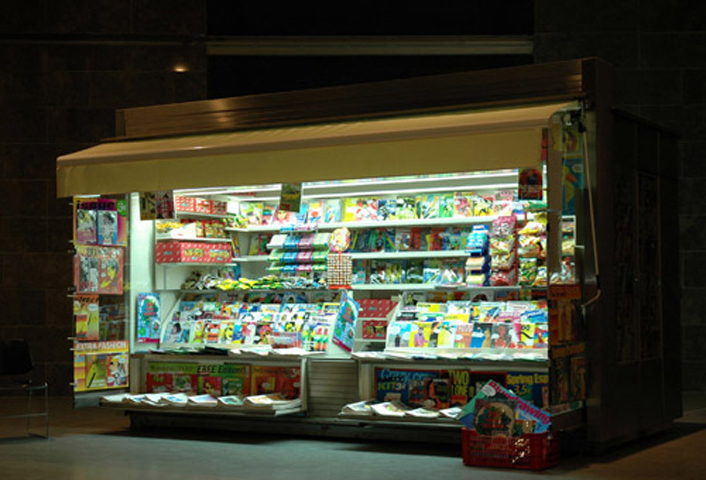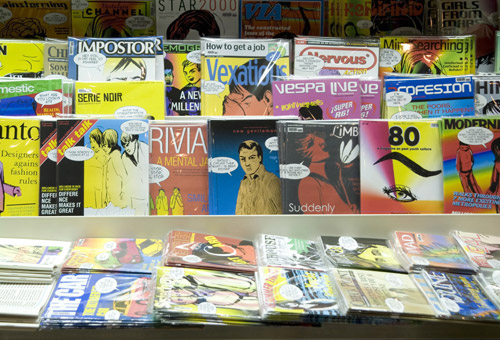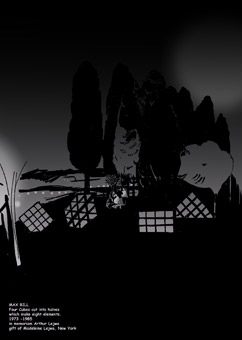







| Untitled |
| (homage to :Max Bill. Four cubes cut into halves which make eight elements. 1973-1985). This darkly-rendered scene offers us a vision of the deterioration of a prized urban site: Max Bill's slit cubes, set in a park overlooking the Old City of Jerusalem. The work attests to the borderline qualities of the site — placed between Old Jerusalem and the newer, western city, and embodying the meeting-points of cultivation and neglect, respectability and shadiness, art and the underworld. |
| Untitled |
| Kiosk Downtown |